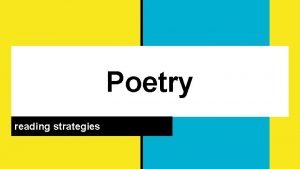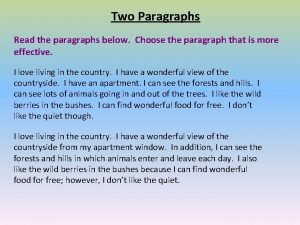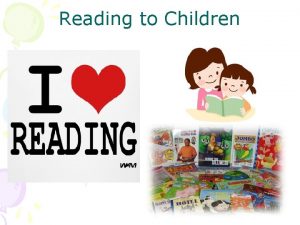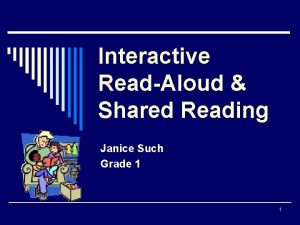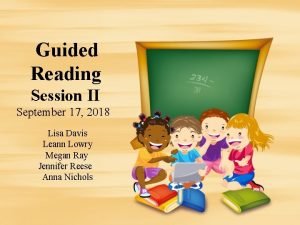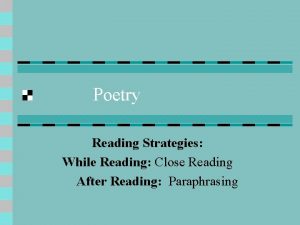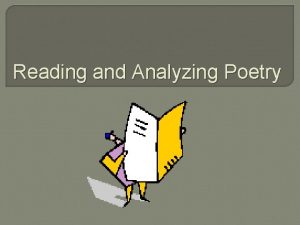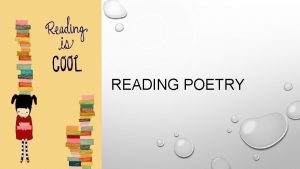Poetry reading strategies General Strategies 1 Read the







- Slides: 7

Poetry reading strategies

General Strategies 1. Read the poem more than once. Every time you read it, you will learn something new. 2. Read slowly, paying careful attention to punctuation. Don’t stop at the end of the line unless there is a reason so to do. 3. Read the poem aloud. Poems are meant to be seen and heard.

Specific Strategies Strategy 1: consider title, author’s nationality, and historical context. Pay attention to the title: it may suggest the poem’s situation, purpose, or theme. Check to see whether information about the poet is included with the poem. If not, research the author, and the time and place the poem was written. This information can help you understand the events described, or the reason the poet wrote in a particular way.

Specific Strategies Strategy 2: make personal connections with the poem. As you read, record your first impressions and responses to the poem. What are your thoughts and feelings about the poem? Which sections evoked the strongest response? What questions do you have? Do you identify with the feelings expressed? Think about times, places, or experiences which evoked a similar response in you. What is the connection?

Specific Strategies Strategy 3: identify the purpose of the poem. Poems are written to achieve different purposes. For example a lyric poem expresses emotion a narrative poem tells a story light verse amuses As you read the poem, ask yourself the poet’s purpose. After reading, consider whether that purpose is accomplished.

Specific Strategies Strategy 4: discuss; seminar. Discuss your response, your ideas and questions with others who are reading the same poem. Use their ideas and insights to test and develop your own.

Specific Strategies Strategy 5: appreciate the poet’s craft. As you read, note the words and phrases the poet uses, and the effects thereby created. Literary devices – simile, metaphor, personification, allusion appeal to the reader’s imagination. Imagery gives vivid description that appeals to our five senses. Sound devices – rhyme, alliteration, assonance, consonance appeal directly to the ear. Rhetorical devices – apostrophe, inversion, repetition, antithesis, oxymoron, paradox – enhance the effectiveness of the expression. from Saliani, Dom. (2002). Communicate (pp. 7 -8). Scarborough, ON: Nelson Thomson Learning.
